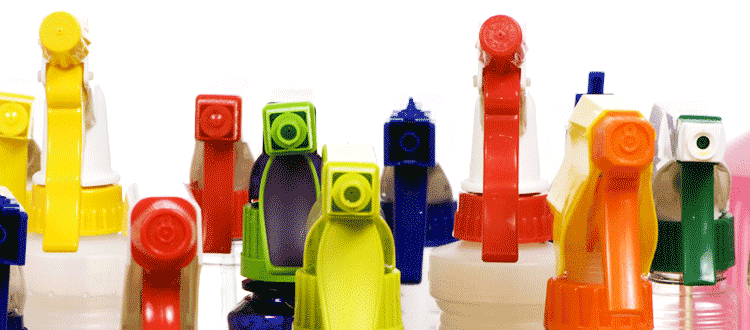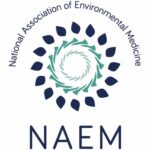Disclosing Ingredients in Cleaning Products? Why All the Fuss?
 |
|
Alex Scranton |
A new bill has been introduced in California which would require that manufacturers publicly disclose the ingredients in cleaning products for the first time. Several major manufacturers are voluntarily disclosing most of their ingredients already, so the bill would simply require the additional disclosure of fragrance ingredients and compel the laggard companies who are not yet disclosing to disclose on par with their competitors.
How important is it to get this ingredient disclosure? Are there really harmful ingredients hiding in the cleaning products we use in our homes? Unfortunately, it appears that there are.
New data from the American Cleaning Institute’s Ingredient Safety Initiative identifies at least thirty chemicals currently found in consumer cleaning products that are serious chemicals of concern. Specifically, these are chemicals that are on the state of California’s Candidate Chemicals List.
What’s the Candidate Chemicals list?
This is a list of chemicals pulled together by the Department of Toxic Substances Control which includes chemicals of concern all drawn from other authoritative lists – such as lists of carcinogens, sensitizers, persistent chemicals etc that other governments and authorities have flagged as potential hazards. As it turns out, some of these chemicals are used in quite high concentrations in average household cleaning products. For example, Cocamide DEA, a carcinogen, is reported to be the dominant chemical (up to 68% of the product’s volume) in certain household cleaning products. Potent petroleum-based solvents such as naptha and Stoddard Solvent can make up up to 20% of the volume of some household cleaning products. Chemicals like these, especially at high concentrations, are clearly of interest and concern to public health. People have the right to know what chemicals are in the cleaning products they purchase. And manufacturers may just think twice about including dangerous chemicals in their products if those chemicals must be revealed to their customers.
For the nitty-gritty on which chemicals of concern are ending up in cleaning products – and their concentrations – please review the following tables (see below).
California Candidate Chemicals found in Cleaning Products
Women’s Voices for the Earth conducted an analysis of chemicals that can be found in consumer cleaning products which are also on the California Department of Toxic Substances Control Candidate Chemicals list.
Table 1[1] lists thirty chemicals which are currently used in consumer cleaning products that are on the California Department of Toxic Substances Control Candidate Chemicals list. The chart indicates the range of chemical concentrations one can find in three main types of cleaning products: all-purpose cleaners, dish care products and laundry care products.
This information was provided by the American Cleaning Institute Ingredient Safety Initiative available online at http://www.cleaninginstitute.org/CPISI . The list is based on data collected from an extensive survey of their member companies. The Ingredient Safety Initiative collected ingredient information about the three categories of consumer cleaning products only, and does not include information on ingredients present in industrial or commercial products. The Initiative also did not collect information on chemicals found in fragrances used in consumer cleaning products. Therefore, this is merely a subset of the ingredients that can be found in the full universe of cleaning products which may be on the California Candidate Chemicals list.
Table 2[2] lists over fifty chemicals that can be used in fragrances that are on the California Candidate Chemicals List. This list is derived from the International Fragrance Association’s Fragrance Transparency list of chemical used in fragrance. No specific information has ever been disclosed to determine which fragrance chemicals may be present in cleaning products.
Table 1: Chemicals used in consumer cleaning products which are found on the California Candidate Chemicals List
Table 1 Chemicals used in consumer cleaning products which are found on the California Candidate Chemicals List*
*Data on concentration ranges provided by the American Cleaning Institute’s Ingredient Safety Initiative.
The chart indicates the range of chemical concentrations one can find in three main types of cleaning products: all-purpose cleaners, dish care products and laundry care products.
| CAS Registry Number | Chemical Name | All-Purpose Cleaners | Dish Care | Laundry Care |
|---|---|---|---|---|
| 10043-35-3 | Boric Acid |
1 to 10% |
||
| 106-97-8 | Butane |
1 to 5% |
||
| 107-98-2 | Methoxyisopropanol |
1 to 10% |
||
| 11113-50-1 | Boric Acid |
1 to 10% |
||
| 111-30-8 | Glutaral |
0.1 to 0.1% |
||
| 111-42-2 | Diethanolamine |
1 to 1% |
1 to 5% |
1 to 1% |
| 1303-96-4 | Sodium Borate |
4.6 to 4.6% |
1 to 10% |
1 to 5% |
| 1310-73-2 | Sodium Hydroxide |
0.1 to 5% |
0.01 to 2.56% |
0.01 to 10% |
| 1330-43-4 | Sodium Borate |
1 to 10% |
0 to 35% |
|
| 13463-67-7 | Titanium Dioxide |
0.1 to 0.1% |
||
| 14464-46-1 | Cristobalite (crystalline silica) |
1 to 5% |
||
| 14808-60-7 | Quartz |
0.1 to 40% |
||
| 3380-34-5 | Triclosan |
% not disclosed |
||
| 4474-24-2 | CI 61585 (Colorant) |
1 to 5% |
1 to 5% |
|
| 64741-66-8 | Naphtha, petroleum, light alkylate |
0.1 to 20% |
||
| 64742-46-7 | C12-20 Isoparaffin |
1 to 10% |
||
| 64742-48-9 | C10-12 Alkane/Cycloalkane |
5 to 10% |
||
| 64742-52-5 | Heavy Naphthenic Distillate |
1 to 20% |
||
| 67-56-1 | Methyl alcohol |
1 to 1% |
||
| 67-63-0 | Isopropyl Alcohol |
0.1 to 32% |
0.5 to 32% |
|
| 68603-42-9 | Cocamide DEA |
1 to 68.41% |
1.77 to 68.41% |
1 to 68.41% |
| 72243-90-4 | CI Acid Violet 48 |
1 to 5% |
||
| 75-28-5 | Isobutane |
1 to 10% |
||
| 7632-04-4 | Sodium Perborate |
1 to 12% |
1 to 70% |
|
| 7647-01-0 | Hydrochloric Acid |
0.04 to 10% |
0.04 to 0.04% |
|
| 7697-37-2 | Nitric acid |
0 to 60% |
||
| 8002-05-9 | Petroleum Distillates |
% not disclosed |
% not disclosed |
|
| 8052-41-3 | Stoddard Solvent |
0.1 to 20% |
||
| 9000-90-2 | Amylase |
0 to 10% |
0.01 to 10% |
|
| 9012-54-8 | Cellulase |
0.01 to 10% |
Information in this table compiled by Women’s Voices for the Earth, January 2017.
Note: This list only includes chemicals listed by the American Cleaning Institute in their Ingredient Safety Initiative. This Initiative did not assess chemicals used in commercial or industrial cleaning products or those found in fragrances used in cleaning products.
Sources: American Cleaning Institute (2017) Cleaning Product Ingredient Safety Initiative. Available at: http://www.cleaninginstitute.org/CPISI/
California Department of Toxic Substances Control (2017) California Candidate Chemicals List. Available at: http://www.dtsc.ca.gov/SCP/CandidateChemicals.cfm
Table 2: Fragrance chemicals on the California DTSC Candidate Chemicals List
| CAS # | Chemical name |
|---|---|
| 100-42-5 | Styrene |
| 105-67-9 | 2,4-Dimethylphenol |
| 106-44-5 | p-Cresol |
| 107-21-1 | Ethylene Glycol |
| 107-98-2 | Propyleneglycol monomethyl ether |
| 108-10-1 | Methyl isobutyl ketone, Isopropyl acetone; (MIBK) |
| 108-39-4 | 3-Methylphenol; m-Cresol |
| 108-67-8 | 1,3,5-Trimethylbenzene |
| 108-95-2 | Phenol |
| 110-54-3 | n-Hexane |
| 110-86-1 | Pyridine |
| 111-76-2 | 2-Butoxyethanol, Ethylene glycol monobutyl ether (EGBE) |
| 119-61-9 | Benzophenone |
| 120-47-8 | Ethyl paraben, Ethyl 4-hydroxybenzoate |
| 123-38-6 | Propionaldehyde |
| 1310-73-2 | Sodium hydroxide |
| 131-57-7 | Benzophenone-3 (2-Hydroxy-4-methoxybenzophenone) |
| 1319-77-3 | Cresols, Cresol mixtures |
| 1330-20-7 | Xylenes; [o-xylene (95-47-6), m-xylene(108-38-3)and p-xylene (106-42-3)] |
| 13463-67-7 | Titanium dioxide (airborne, unbound particles of respirable size) |
| 140-67-0 | Estragole |
| 25013-16-5 | Butylated hydroxyanisole (BHA) |
| 25154-52-3 | Nonylphenol |
| 25973-55-1 | 2-(2H-benzotriazol-2-yl)-4,6-ditertpentylphenol (UV-328) |
| 28553-12-0 | Diisononyl Phthalate; 1,2-Benzenedicarboxylic acid, diisononyl ester (DiNP) |
| 515-03-7 | 1-Naphthalenepropanol, |
| 541-02-6 | Cyclopentasiloxane, decamethyl- |
| 64741-65-7 | Naphtha (petroleum), heavy alkylate; Low boiling point modified naphtha |
| 64742-46-7 | Distillates (petroleum), hydrotreated middle; Gasoil – unspecified; |
| 64742-48-9 | Naphtha (petroleum), hydrotreated heavy; Low boiling point hydrogen treated naphtha |
| 64742-52-5 | Distillates (petroleum), hydrotreated heavy naphthenic; Baseoil – unspecified; |
| 6535-42-8 | 1-Naphthalenol, 4-[(4-ethoxyphenyl)azo]- |
| 67-63-0 | Isopropanol |
| 67-64-1 | Acetone |
| 68648-53-3 | Resin acids and Rosin acids, hydrogenated, esters with triethylene glycol |
| 74-93-1 | Methyl Mercaptan |
| 75-07-0 | Acetaldehyde |
| 75-65-0 | Tertiary butyl alcohol (TBA) |
| 78-93-3 | Methyl ethyl ketone |
| 84-66-2 | Diethyl phthalate (DEP) |
| 85-86-9 | 2-Naphthalenol, 1-[4-(phenylazo)phenyl]azo- |
| 90-12-0 | 1-Methylnaphthalene |
| 9016-45-9 | Nonylphenolethoxylate |
| 91-20-3 | Naphthalene |
| 91-57-6 | Methylnaphthalene; 2-Methylnaphthalene |
| 92-52-4 | Biphenyl |
| 93-15-2 | Methyleugenol |
| 94-13-3 | n-Propylparaben |
| 95-48-7 | 2-Methylphenol, o-Cresol |
| 95-63-6 | 1,2,4-Trimethylbenzene |
| 97-99-4 | tetrahydro-2-furyl methanol; tetrahydrofurfuryl alcohol |
| 98-86-2 | Acetophenone |
| 99-76-3 | Methylparaben; Methyl p-Hydroxybenzoate |
| Various | Nonylphenol, nonylphenol ethoxylates (NP/NPEs) (and related substances) |
Information in this table compiled by Women’s Voices for the Earth, November 2015
Sources: International Fragrance Association (2017) IFRA Survey Transparency List Available at: http://www.ifraorg.org/en-us/ingredients
California Department of Toxic Substances Control (2017) California Candidate Chemicals List Available at: http://www.dtsc.ca.gov/SCP/CandidateChemicals.cfm






Thank you for information. Do you have any on hand sanitizer? Had two allergic reaction to it. I don’t use it any more. Just want to chemicals in product are harmful. Thank you.
Julie, our local science museum (Denver) had a lab experiment available, and it showed that hand sanitizer did almost nothing to kill bacteria, so might not be worth bothering with! Avoid triclosan in any case, and “fragrance”.